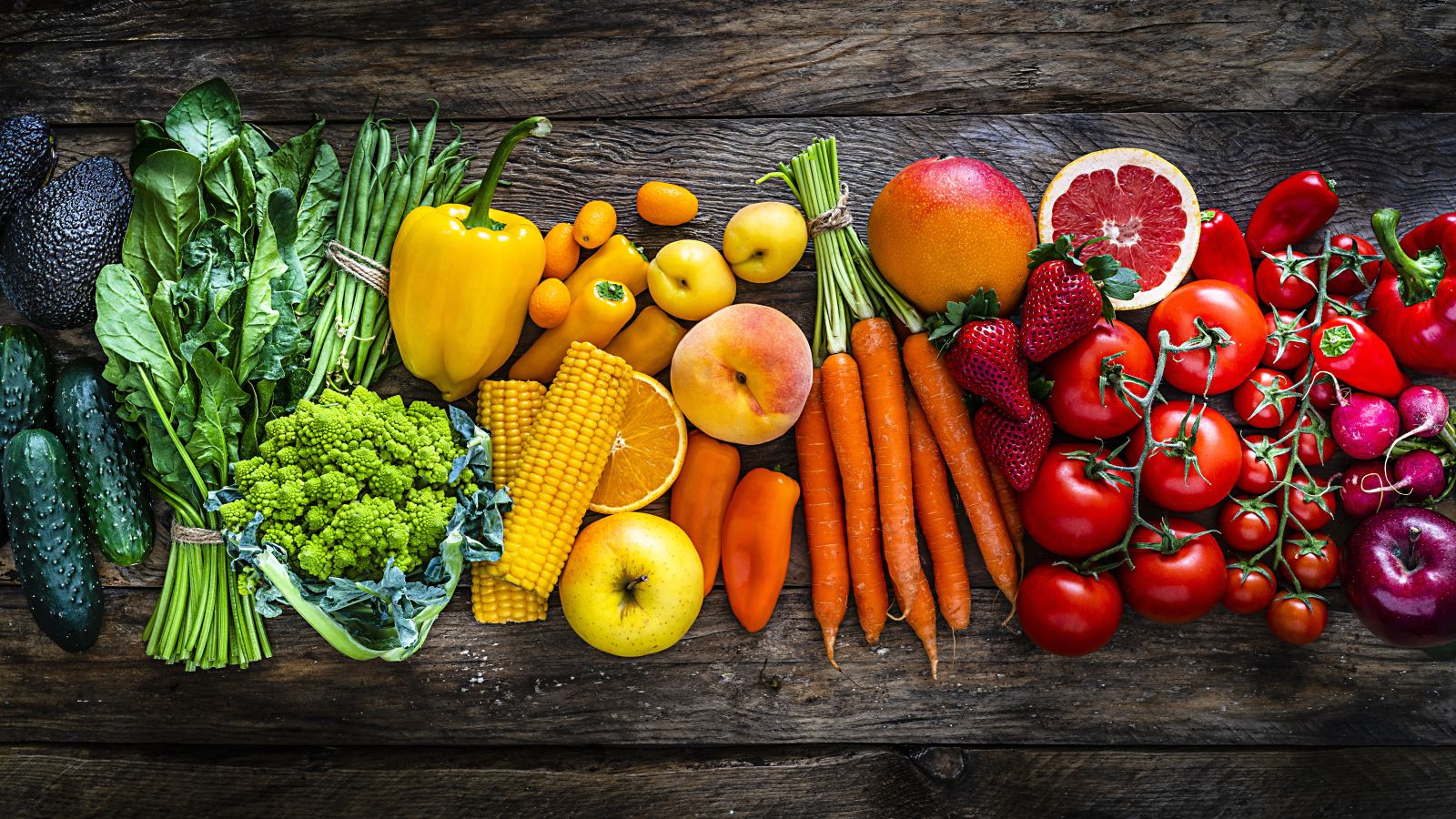<< Back
Which Color Foods Offer the Most Health Benefits?

October 07, 2023
We all love a colorful plate of food. But as it turns out, eating a variety of color foods means you’re also reaping a wide range of health benefits.
So which color foods should have a place on your plate? We asked a dietitian to break it down.
1. Green.
“Green fruits and vegetables – especially leafy greens – are loaded with Vitamins A and C. These promote bone health, and can help with vision,” says Elizabeth Barclay, MBA, a registered dietitian who practices at St. Vincent’s Medical Center.
Add more greens to your diet with spinach, lettuce, broccoli, asparagus, avocado, peas, apples, grapes, limes or kiwi.
> Related: These 4 Foods Can Decrease Your Risk of Cancer
2. Red.
These are best known for their heart-healthy properties, but that’s not all they do.
Red fruits and vegetables have a range of other benefits including a reduced risk of urinary tract infections and improved prostate health. Try incorporating more red produce in your diet with peppers, tomatoes, beets, apples, cherries, strawberries, raspberries or watermelon.
3. Yellow/Orange.
Yellow and orange produce can boost your immune system, promote overall cell health and can even promote improved vision.
Try adding carrots, squash, sweet potatoes, yellow beets, lemons, corn, oranges, peaches or pineapple to your rotation.
> Want more health news? Text StartHere to 85209 to sign up for text alerts
4. Blue/Purple.
If you’re looking to fight off the effects of aging, this might be the way to do it. Blue and purple fruits and vegetables have antiaging properties and promote brain health and memory.
To see the impacts, be sure to get plenty of purple carrots, eggplant, purple potatoes, purple cauliflower, blueberries, blackberries or grapes in your diet.
5. White.
White produce can help treat and prevent infections, and promote heart health.
Try adding mushrooms, cauliflower, parsnips, turnips, white corn, onions, potatoes, white bell peppers, beans, white strawberries or coconut to your meals to reap the benefits.
Variety is key.
There’s no right number, but it’s important to get a few different colors on every plate.
“Between the fruits, vegetables, and carbohydrates on your plate, try to shoot for at least two or three different colors. No one color is more important than the next, so be sure to include a variety,” says Barclay.
And that variety doesn’t only apply to color.
“Incorporate different flavors, textures and food groups to create meals that aren’t just beautiful, they’re delicious, too,” Barclay adds. “Create balanced meals with fiber, protein and healthy fats.”
Establish your “go-tos.”
And for each color, Barclay suggests identifying some “go-tos.”
“Everyone is different – my favorite foods of each color won’t be the same as yours. But it’s so important to find those favorites, and start building your meals around them.”
And go-to cooking techniques are just as important.
“Maybe you’ve been avoiding certain vegetables because you don’t like them steamed or sautéed. But have you tried roasting or grilling them? Or adding your favorite spices?”
This can help you add more vegetables to your diet, and create healthy habits that are sustainable in the long run.